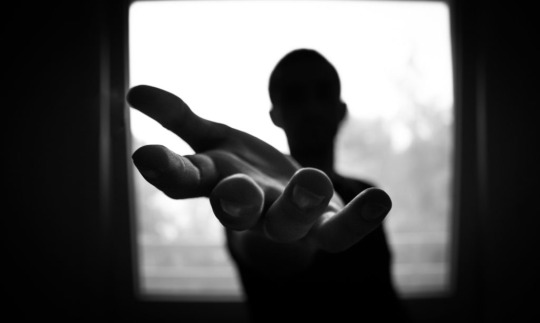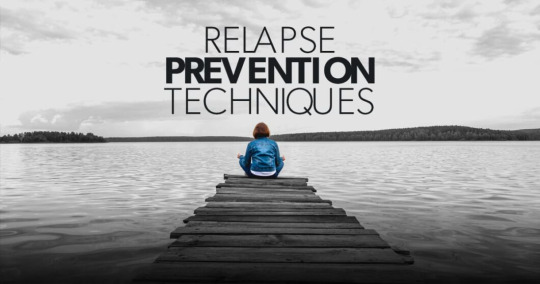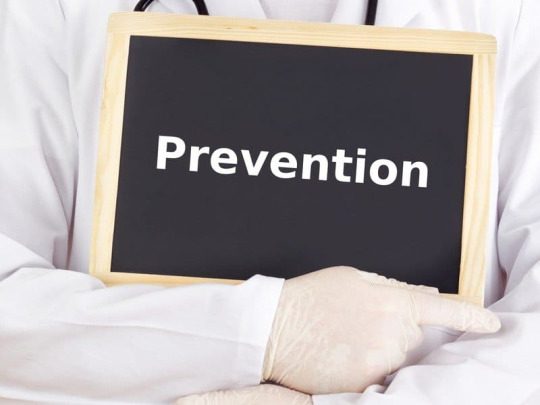Text
Why Do Addicts Relapse? Know the Triggers

Between 40 and 60 percent of addicts relapse while in recovery from drug addiction, according to the National Institute on Drug Abuse. This means that, for every two people who seek drug addiction treatment or abstain from substance abuse for a period of time, one will relapse.
The thought that an addict will still relapse even after treatment makes some people continue with their substance abuse. They feel that there is no need trying to get sober as they might still end up failing. In most cases, though, the brain of an addict convinces them that they are doing the right thing. When one takes drugs, the brain produces dopamine, which controls pleasure. After a long period of use, the brain re-prioritize essential activities such as eating, going to work, and taking a shower, among others.
So during recovery, individuals take on a whole new experience of re-training their brain to see healthy living as the new standard for survival. Instead of getting high or using drugs, now it’s time to stay sober and take on a new lifestyle. Doing this can bring up quite an inner conflict for a lot of us. So it’s extremely wise to equip ourselves with understanding: why do addicts relapse, what is it, and how does it happen?
How Does Relapse Happen?
During recovery, an addict might relapse more than once. Sometimes, an addict might remain sober (or think they have recovered fully) but then relapse after many years. A good example is when actor Philip Seymour Hoffman was found dead in his New York apartment in 2014 after mixing heroin, cocaine, benzodiazepines, and amphetamine. Before his death, Seymour claimed he had been sober for 23 years.
Like other chronic diseases that recur after treatment, addiction (as well as mental health disorders) take a lifelong health “management” role. Put simply, addiction is considered a brain disorder where an individual convinces themselves to engage in compulsive drug use despite knowing the harmful effects. It’s not always so realistic to say to an addict, “just stop using”.
Several factors can cause a relapse. Most of these factors might be extrinsic, but in most cases, the motivation to go back to substance abuse stems from within.

What Causes an Addict’s Relapse?
After going through treatment programs, people expect to go back to their normal lives free of drugs. But that is not always the case seeing as sobriety is not guaranteed. The end of rehab sometimes means going back to an environment where an addict once used drugs. The reality of this environment, along with certain people, or things can evoke emotions and memories that bring the urge to abuse drugs.
The duration of addiction influences an addict’s likelihood of relapse. For instance, an addict recovering from a lifetime of alcohol use is likely to relapse than one recovering from a year or two of frequent binge drinking. The factors that contribute to relapse rates, triggers, and recovery vary. When an addict yields to triggers, relapse is more prone to happen. To manage these triggers, an addict needs to seek aftercare services.
What Are Triggers?
Triggers are feelings, thoughts, emotions, situations, things, places, or relationships that literally “trigger” an urge to go back to drug use. Triggers can happen randomly, without expectation, even after so many years of abstinence.
For instance, running into someone from your drug days who is still using the drugs can bring up unwanted memories that inspire intense drug craving. Or driving past your favorite bar while visiting your hometown can result in the curios temptation to check it out “one more time”.
To avoid the most common relapse triggers, many people use the acronym: HALT:
Hungry
Angry
Lonely
Tired
People in recovery need to avoid extreme hunger, anger, loneliness, and tiredness.
Other relapse triggers include:
stress
insomnia
anxiety or depression
physical illness
certain social events
friends who negatively impact your recovery
peers, coworkers, or unfavorable individuals
life crisis
emotional events
anger issues
major life changes, such as moving
Being aware of your biggest triggers is crucial in recovery. Addicts relapse generally when they feel an aspect of life is out of their control and they close off to the support in their lives. Therefore, it’s incredibly helpful to understand where to turn to if any of these things feel extra heavy on your process.

Maintaining Treatment Plans After Rehab
Treatment does not stop after rehab. A patient needs to continue with withdrawal relief medication if necessary, and attend therapy once in a while. Many years after treatment, the patient still needs to avoid triggers, like staying away from friends who do drugs and building their social lives around other sources of fun. When an addict takes the right conscious steps towards recovery, they increase their chances of maintaining sobriety for a lifetime.
A treatment plan after rehab provides the care a patient needs to prevent a relapse. The plans include cognitive behavioral therapy and 12-step education, both of which ensure the addict avoid triggers that will result in relapse. Many addiction treatment centers have an aftercare service and follow up with their patients to ensure they do not relapse.
Sober Living and Supportive Community
Sober homes are effective in helping addicts deal with life after rehab. According to research published on the US National Library of Medicine Journal, Oxford House in Illinois has found great success in handling patients after rehab. Oxford House operates as a non-profit organization that runs sober homes in different parts of the US, among other countries. Those recovering from substance use disorders run the homes – they help each other like in AA meetings. After six months, new officers get elected to run the homes.
According to the study, patients who completed their treatment at Oxford House were less likely to relapse compared to those who used conventional aftercare services. The patients in the study were tracked for 24 months, after which they showed significantly lower rates of substance abuse.
After treatment, a patient needs a strong support system while staying sober. Immediate assistance needs to come from family members, friends, peer mentors, work colleagues, support groups, and recovering coaches. This group of people helps the addict in challenging times, and they are there to prevent triggers.
Other Warning Signs and Triggers
Several internal and external triggers can lead to an addict’s relapse. Any circumstance that recreates a situation that leads to addiction is likely to cause a relapse. Other factors that can cause a relapse to include:
Fatigue: When one is stressed mentally or physically, they feel fatigued, and this can affect their everyday tasks. When the stress is too much, one feels the urge to numb the fatigue with alcohol or drugs.
Depression: Depression will likely occur with or after addiction. During a period of depression, a person tends to oversleep, they lose interest in activities they once thought were fun, and they have difficulties focusing. If an addict recovering from substance abuse experiences depression, they will likely try drugs to find relief.
Physical Pain: Alcohol numbs the pain. According to studies, reduction in physical pain reduces the chances of relapse after alcohol treatment.
Dishonesty: Failure to express feelings such as anger and resentment can lead to relapse. People recovering fail to express their feelings and instead make excuses for tasks not accomplished and when they are frustrated by other people. As a result, these feelings trigger a relapse.
Self-Pity: When one is recovering from substance abuse, they might pity themselves since they cannot attend some social events or go to the bar with friends. When an addict feels sorry for themselves, or they dwell on the negative impacts of fighting addiction, they might re-seek comfort in drugs.
Idleness: If one is unemployed, lack hobbies, or feels bored, they have no money and spend most of their days idle at home, they might relapse to drugs. Research found that risky drinking is more prevalent among the unemployed.

Conscious Commitment and Mindful Activities Help Prevent a Relapse
In most cases, recovery takes years. While an addict can go to rehab and come out after six months, the recovery process does not stop there. To achieve lifetime sobriety, an addict needs to stay committed to the process consciously. During recovery, the patient needs to attend counseling and meetings such as Alcoholics Anonymous and Narcotics Anonymous.
According to a 2014 study published in JAMA Psychiatry, mindfulness-based programs such as meditation help reduce the chances of a relapse. When combined with traditional mindfulness prevention programs, such as recognizing triggers, these methods are more effective in keeping an addict sober.
Addiction Relapse and Social Stigma
To an addict, addiction is a private affair, especially among celebrities. Generally, addiction is stigmatized, and this stems from the fact that most people misunderstand addition.
When someone is addicted, the brain prioritizes drug use to survival. When the need to use drugs supersedes a person’s survival instincts, a person risks their life just to use drugs. While people will see using drugs as a way to express problems in the family and at work, addiction is a disease that most people want to get out of but can’t.
Preventing Relapse
Addiction is irrational. An addict might lose their physical health, mental health, their job, family, friends, and everyone they care about, but the drug will still pull them back. The drug does not care about the consequences. As such, besides the addict doing everything to prevent a relapse, those around them need to offer a strong support system to help them avoid triggers and find them a replacement for the drugs.
An addict may not handle a relapse on their own, seeing that their addiction works against their efforts. If you need help with addiction, get help today. Or if you feel a desire to relapse, reach out to a professional in your community.
Call Opus Health today at 949-264-0191.
6 notes
·
View notes
Text
How to Prevent Relapse: 10 Relapse Prevention Techniques

Not everybody relapses, but many do. Relapse may not be guaranteed, but it does happen often. Luckily there are some relapse prevention techniques that can help you maintain control.
The definition of addiction is “a chronic brain disease characterized by an inability to control substance use.” The “chronic” nature of the definition means that relapse is a part of the disease. The idea that relapse is an expected part of addiction is controversial because people like to believe they have some control.
This article will be all about relapsing. Understanding some triggers and statistics regarding relapse may help you be prepared when faced with this aspect of being in recovery. If you find yourself considering giving in to your drug and alcohol cravings again after a substance abuse treatment, follow these techniques to keep yourself sober.
Can I Relapse After Being Drug- or Alcohol-Free?
The latest statistics from National Institute on Drug Abuse (NIDA) show that approximately 60% of people who struggled with substance use disorder relapse to their addictive behaviors within one year of addiction treatment.
The percentage of relapses gets smaller and smaller the longer someone is sober, but it always remains a factor.
Do not let these tragic figures discourage you. For many people, relapse is a part of addiction recovery and should be viewed as an obstacle on the path rather than the end of the road. Sometimes we fall, but when we fall, we get back up.
Why Does Relapse Occur?
Many potential triggers may pull us back into drug addiction. When we’re not in a good state of mental health, we put ourselves in high-risk situations for mental relapse and to fall back to old habits.

Some of the common relapse triggers are:
Boredom
Stress and anger
Financial problems
Relationship issues
Certain sights/ smells
People
Places
Withdrawal Symptoms
There is a risk of relapsing at any stage of recovery, making relapse prevention skills highly essential to know.
Relapse Prevention Techniques
Relapse prevention tools will help you lead a happy life in recovery and reduce the chance of relapse. Treatment programs will teach you a range of strategies to control relapse triggers, but we don’t always have access to treatment centers for help.

Here are ten quick relapse prevention techniques:
Self-awareness, Know What Triggers You
Triggers can be internal (anxiety, irritability, stress, anger, low self-esteem) or external (people, places, or things that remind one of their past addictive behaviors). Make a list of internal and external triggers to gain awareness, reduce the risk of relapse and increase the degree of control.
HALT; Hungry, Angry, Lonely, and Tired
The most common and recurring triggers for many recovering alcoholics and addicts are hunger, anger, loneliness, and tiredness. By keeping a regular check on HALT, one can help prevent the risk of emotional relapse.
Self-care
The New York Office of Alcoholism and Substance Abuse Services (OASAS) suggests that insomnia and fatigue are the common triggers of relapse. By engaging in sober activities and implementing physical exercise, following a structured sleep and eating schedule, one can reduce the risk of relapse.
Practice Mindful Meditation
The concept of mindfulness teaches individuals to become more self-aware and learn to “roll with” their cravings rather than fight them. Using mindfulness-based relapse prevention will help you have fewer cravings and increased awareness.
Join a Support Group
An excellent way to remain clean and sober is by regularly participating in a support group, like alcoholics anonymous. These groups provide support, accountability, education, and the opportunity to meet peers who can relate to what you are going through.
Deep Breathing Exercises
Deep breathing is an excellent relapse prevention technique. Deep breathing releases feel-good chemicals in your brain resulting in relaxation, happiness, and pain reduction.
Try 4-7-8 breathing; you should feel a difference!
Close your eyes breathe in through your nose for 4 seconds.
Hold your breath for 7 seconds.
Exhale through your mouth for 8 seconds.
Repeat this process at least four times.
Grounding Techniques
A helpful relapse prevention skill is a grounding tool called the “5-4-3-2-1 technique.” It takes you through the five senses to focus on the present moment and avoid thoughts of using alcohol or other drugs.
The five steps begin by taking a few deep breaths, followed by the following:
5: Acknowledge 5 things you see
4: Acknowledge 4 things you can touch
3: Acknowledge 3 things you can hear
2: Acknowledge 3 things you can smell
1: Acknowledge 1 thing you can taste
Make an Emergency Contact List
A beneficial relapse prevention tool is making a list of supportive people, family members, or friends who may also be in recovery that you can call for support.
Your emergency contact list should be made up of people you can trust who will focus on helping you without judgment. The focus should only be on helping, so any contacts that could possibly make the situation worse, either because of disappointment or attitude should be left off this list.
People to consider for your list:
Parents
Siblings
Sponsor
Close Friend
Spouse
Counselor
Therapist
Life Coach
Think of the Consequences
If you find yourself debating whether to drink or get high, play out what will happen in your mind. Try to visualize the consequences you will face in the short and long-term if you decide to drink or give in to your drug cravings. Think of all the progress you’ve made and how disappointed you and your support group will be.
Get Help
The fear of relapse can be debilitating, especially in stressful situations. But you can get fully prepared with a relapse prevention plan of healthy coping strategies by simply calling a treatment facility.
Cognitive behavioral therapy (CBT) is one practice that is widely used in counseling and treatment that helps to retrain the brain to better cope with cravings. The practice can be utilized and revisited as needed.
Ask your treatment center if cognitive behavioral therapy is a treatment they offer. If relapse prevention is a big concern of yours, you may even be better off finding a drug and alcohol treatment center that specializes in cognitive behavioral therapy.
If you are ready to make a change and gain personal control, than give us a call at (949) 264-0191.
Opus Health addiction professionals will educate you on relapse prevention techniques and give you the tools to maintain lifelong sobriety.
1 note
·
View note
Text
Relapse Prevention: 7 Common Triggers & How To Avoid Them

Recovering addicts are at extremely high risk for relapse because it is so difficult to fight ingrained behaviors, as well as physical, mental, and emotional addiction to substances. According to the National Institute on Drug Abuse (NIDA), those in addiction treatment suffer relapse at a rate of about 40-60%. These aren’t great odds, and they worsen when recovering addicts are presented with triggers.
Exercises in mindfulness can be extremely helpful during early recovery and beyond, because they help recovering addicts to recognize triggers and make healthy and productive choices when they encounter them. What are some of the most common triggers recovering addicts encounter and how can they be avoided to prevent relapse?
Returning to High-Risk Environments
Many people emerging from addiction have little choice but to return to a home environment they lived in before meth addiction treatment Orange County, or a job they held prior to entering recovery. These environments can be rife with triggers that cause the addict to crave the substances they once abused. Ideally, addicts leaving rehab will find new environments that offer the best opportunity to stick with sobriety, develop new habits, and build the confidence and willpower to avoid dangerous situations the could lead to relapse.
Returning to High-Risk Relationships
Recovering from addiction is something that most people can’t do alone. If addicts want to maintain relationships with loved ones, these people need to support and empower the addict to make good decisions.
Often, this means family members and friends will also need to undergo treatment to understand how their behaviors contribute to an environment that enables addiction. With a strong support system in place and loved ones willing to participate in the recovery process, addicts have the best chance to avoid relapse.
Encountering High-Risk Circumstances
In early recovery especially, being confronted with the object of addiction, or with reminders of addiction, can be an overwhelming trigger. When addicts first emerge from prescription drug rehab Orange County, it’s important to do everything possible to avoid high-risk situations. This could include avoiding people or environments that are connected to prior addiction, but it could also involve simple preparedness.
A common acronym ascribed to such situations is HALT, which stands for hungry, angry, lonely, and tired. When recovering addicts come up against even simple problems like huger or fatigue, they’re less capable of making wise decisions (actually, this can be true for most people). Simple planning can help addicts to avoid these high-risk situations and the heightened temptation they cause.
Social Isolation Following Meth Addiction Treatment Orange Country
The stigma attached to addiction and recovery can cause recovering addicts to avoid social situations and become isolated. However, social support is an important part of recovery and surrounding oneself with the right people can make a huge difference when it comes to reinforcing positive emotions and behaviors. This is why attending AA or related meetings is so important.

High Stress
Stress can cause even the most well-adjusted person to exhibit unhealthy behaviors, and it can be an incredibly compelling trigger for recovering addicts. Anticipating stress and working proactively to prevent it can really help addicts to remain sober and continue the recovery process.
Heightened Emotions
It’s easy to understand why an addict might return to drinking or using drugs in the wake of unpleasant emotions. If a recovering addict loses a job, gets in a fight, breaks up with a partner, or suffers the death of a loved one, returning to addiction to ease the pain can be very tempting.
However, heightened positive emotions can be just as dangerous. Celebrations are a major trigger for relapse. There is a strong social urge to participate with other revelers at a birthday party, wedding, or other celebration, and this often means imbibing alcohol or otherwise giving in to addictive behaviors. Maintaining sobriety means having a plan in place to deal with such situations and emotions.
Over-Confidence after Leaving Prescription Drug Rehab Orange County
The intensive work addicts do in rehab can make them feel like they have the information and tools they need to reenter the world as a sober person. They may feel as though they’ve recovered, instead of understanding that they’re involved in a lifelong recovery process.
What they may not realize is that the protective cocoon of a rehab facility is specially designed to insulate addicts from triggers and it does not follow them into the real world. There is no buffer, and it can be all too easy to allow learned behaviors from years of addiction creep in and take over. Implementing new skills to remain sober when returning to one’s life is a constant struggle.
It is necessary to leave rehab with hope and confidence in one’s ability to remain sober, but getting over-confident can lead to dangerous activities that result in a relapse. It’s important to behave in a safe and cautious manner and remember that recovery from addiction is a lifelong process.
If you or a loved one needs help, call us at 949-541-2622.
0 notes